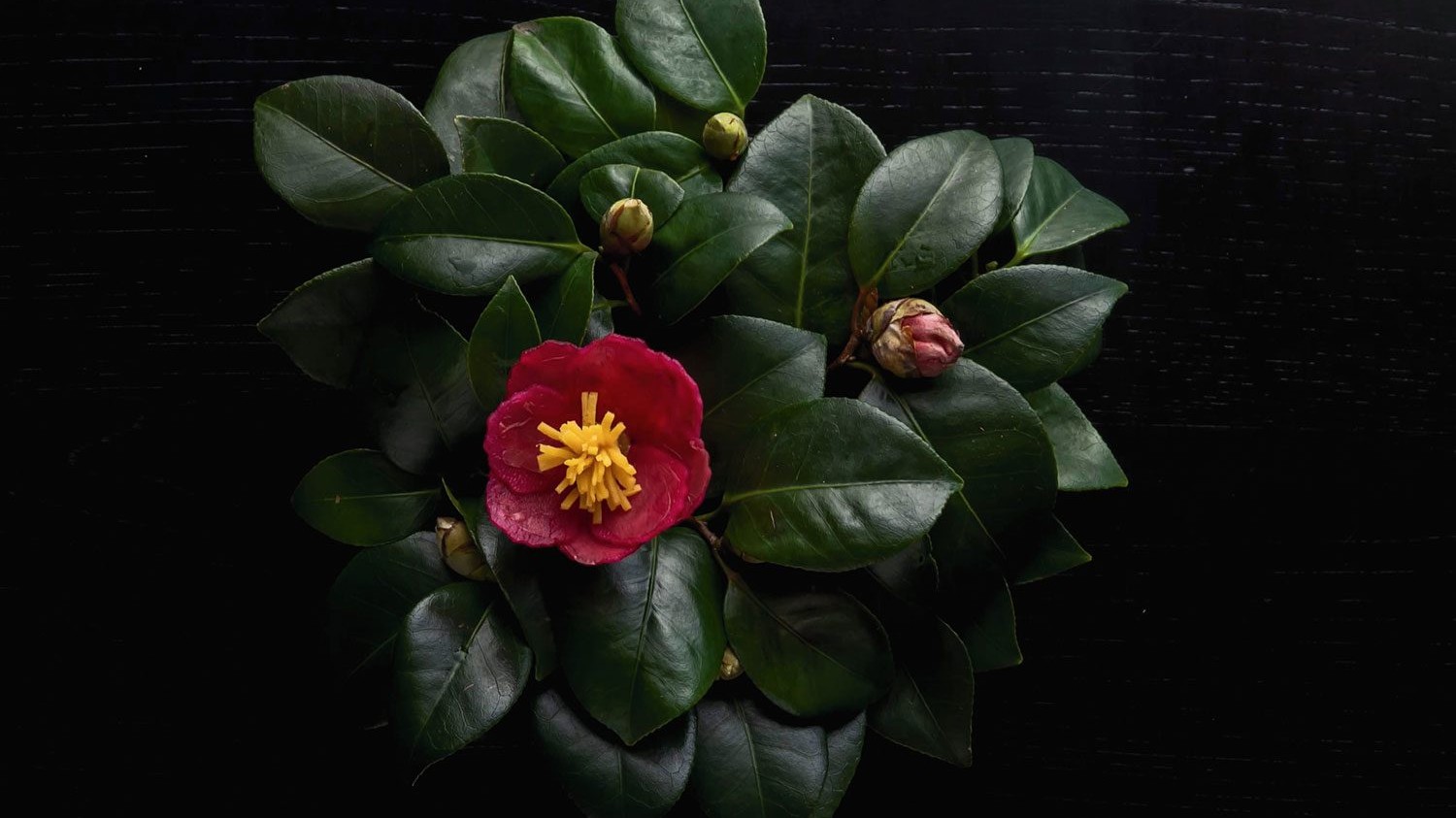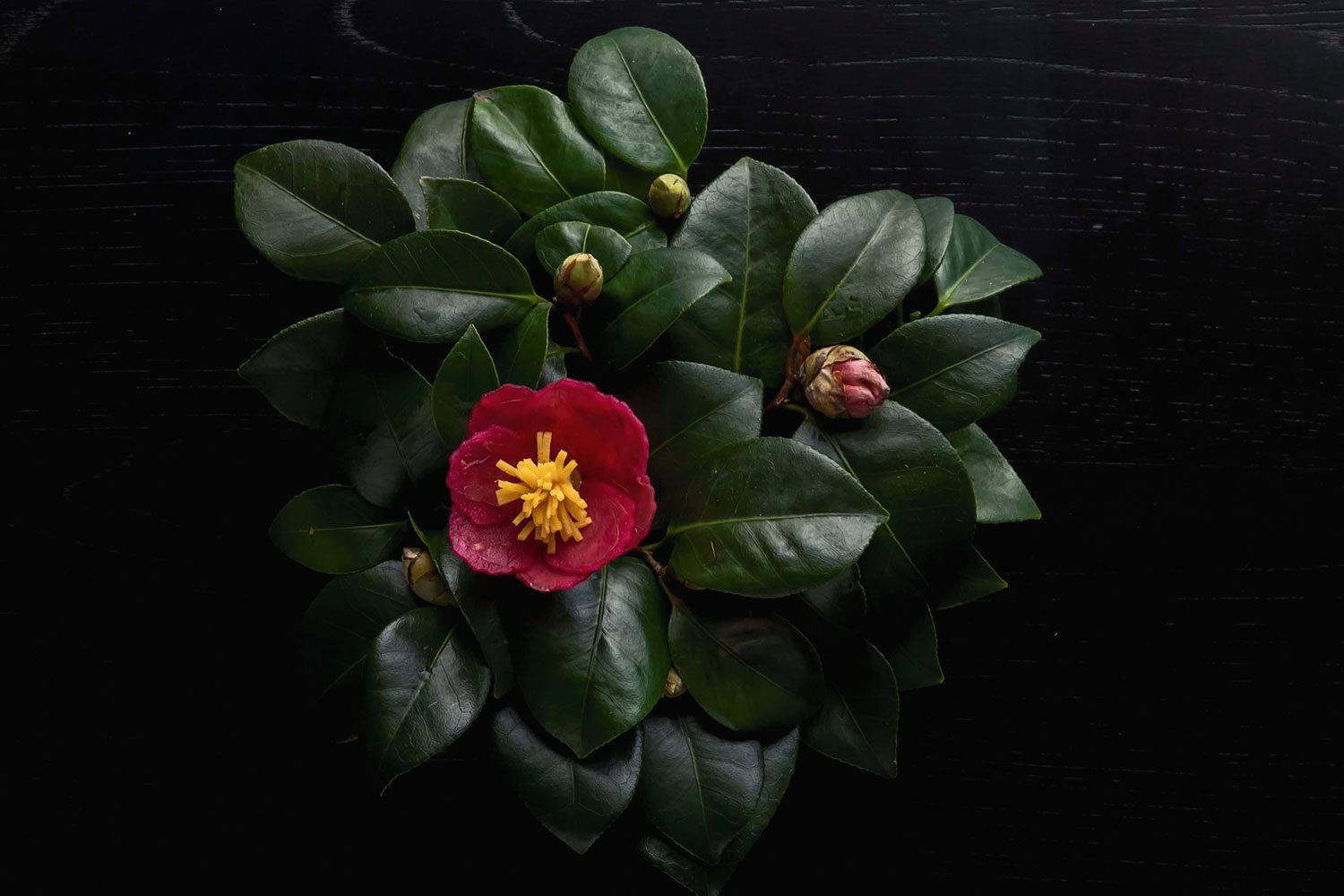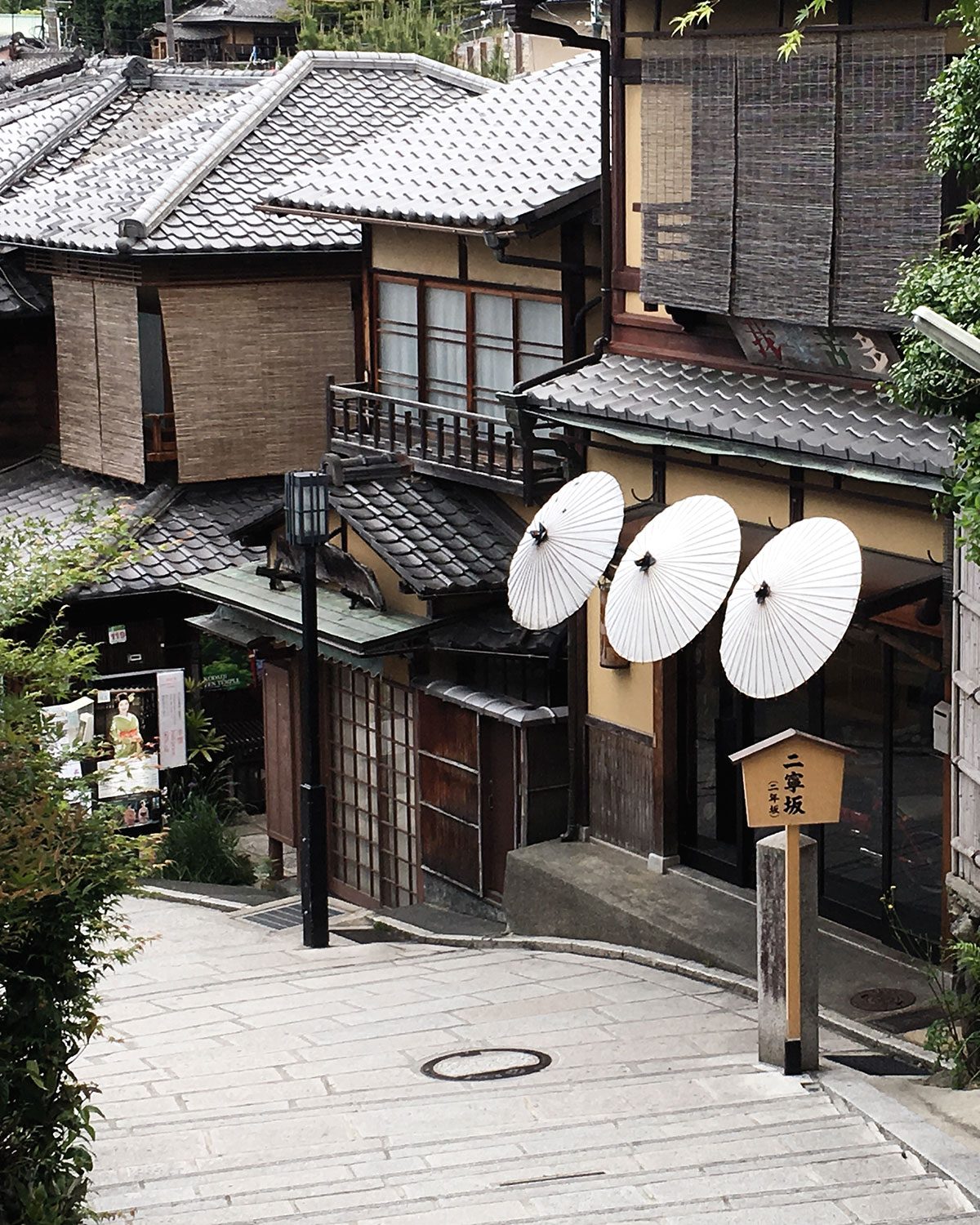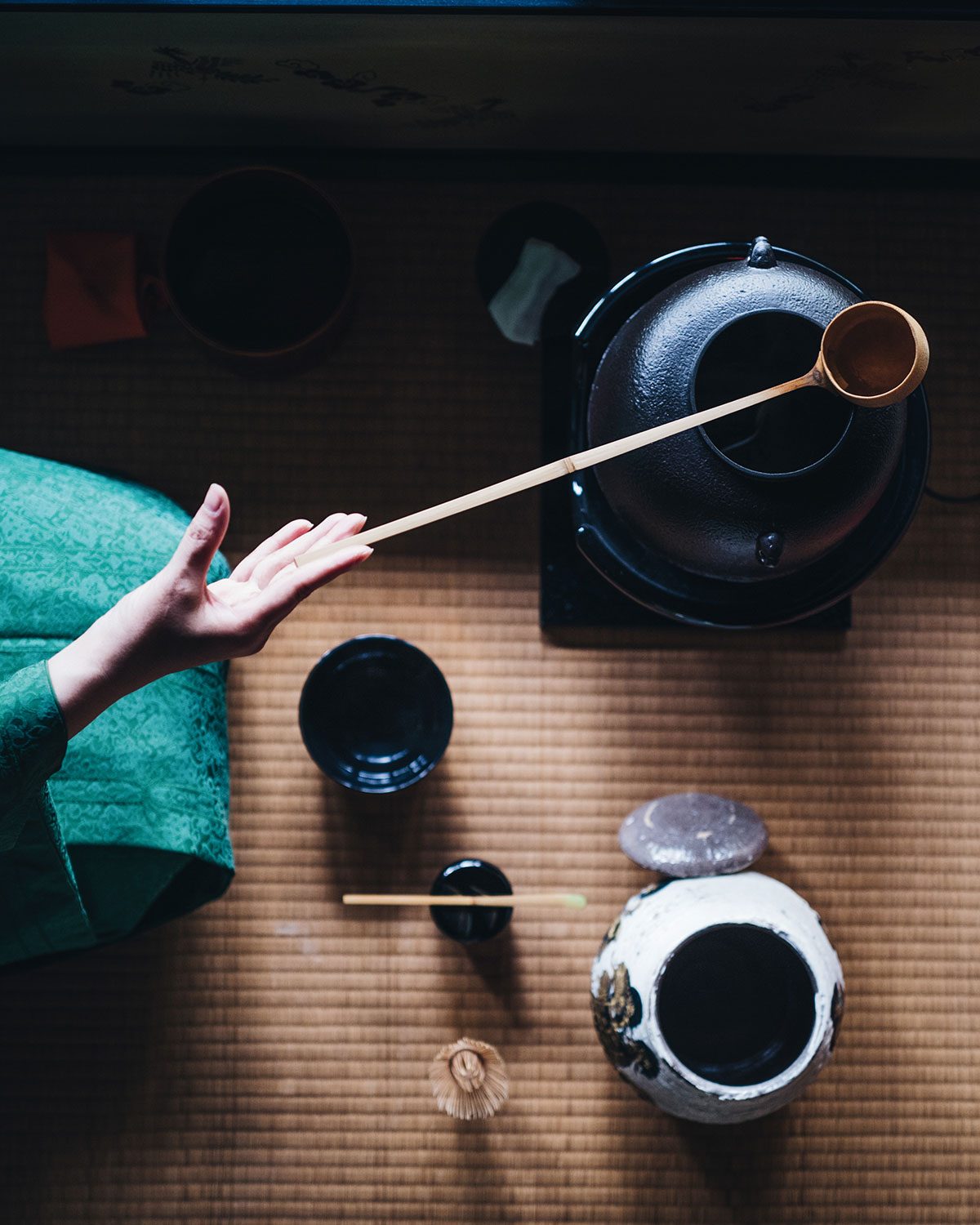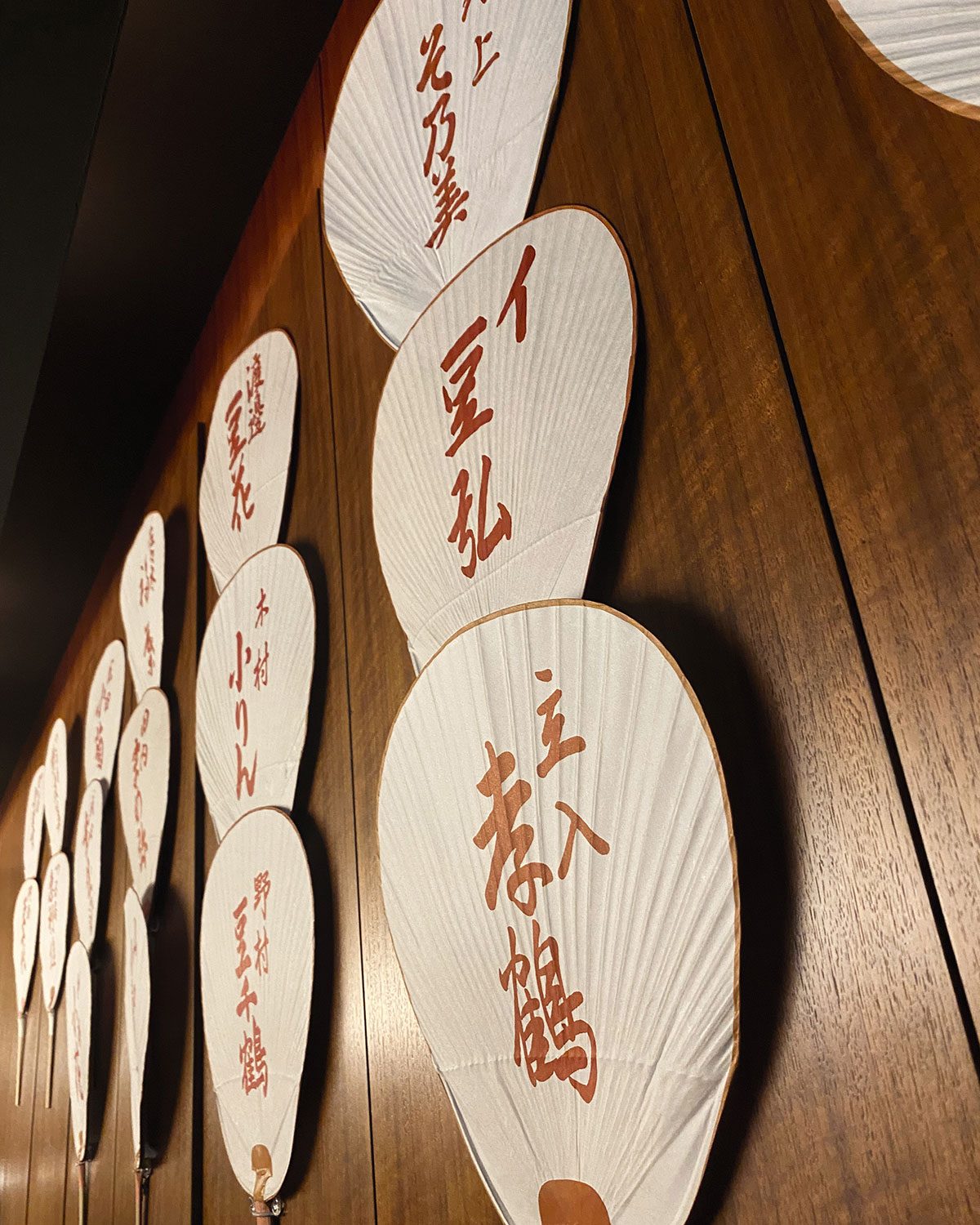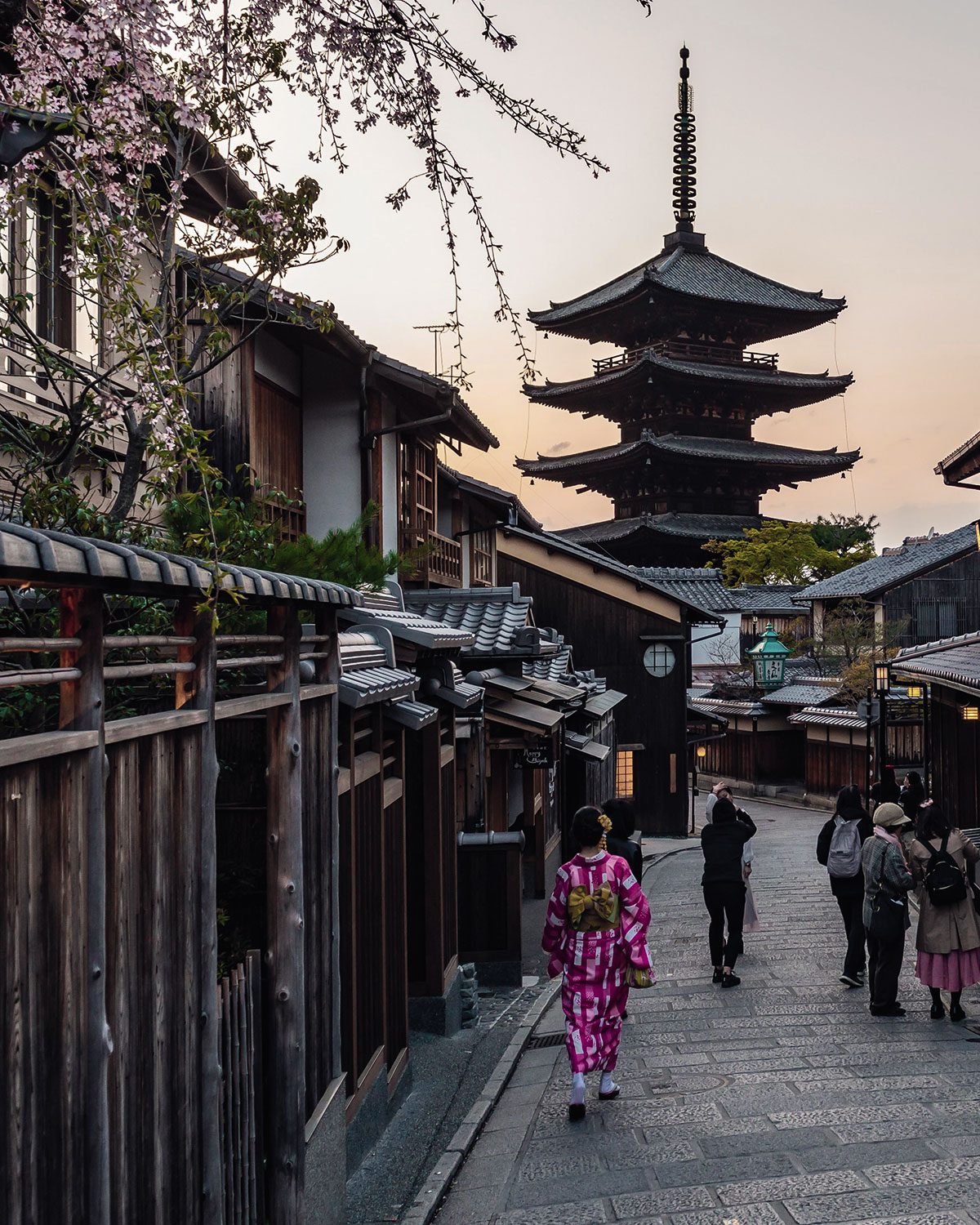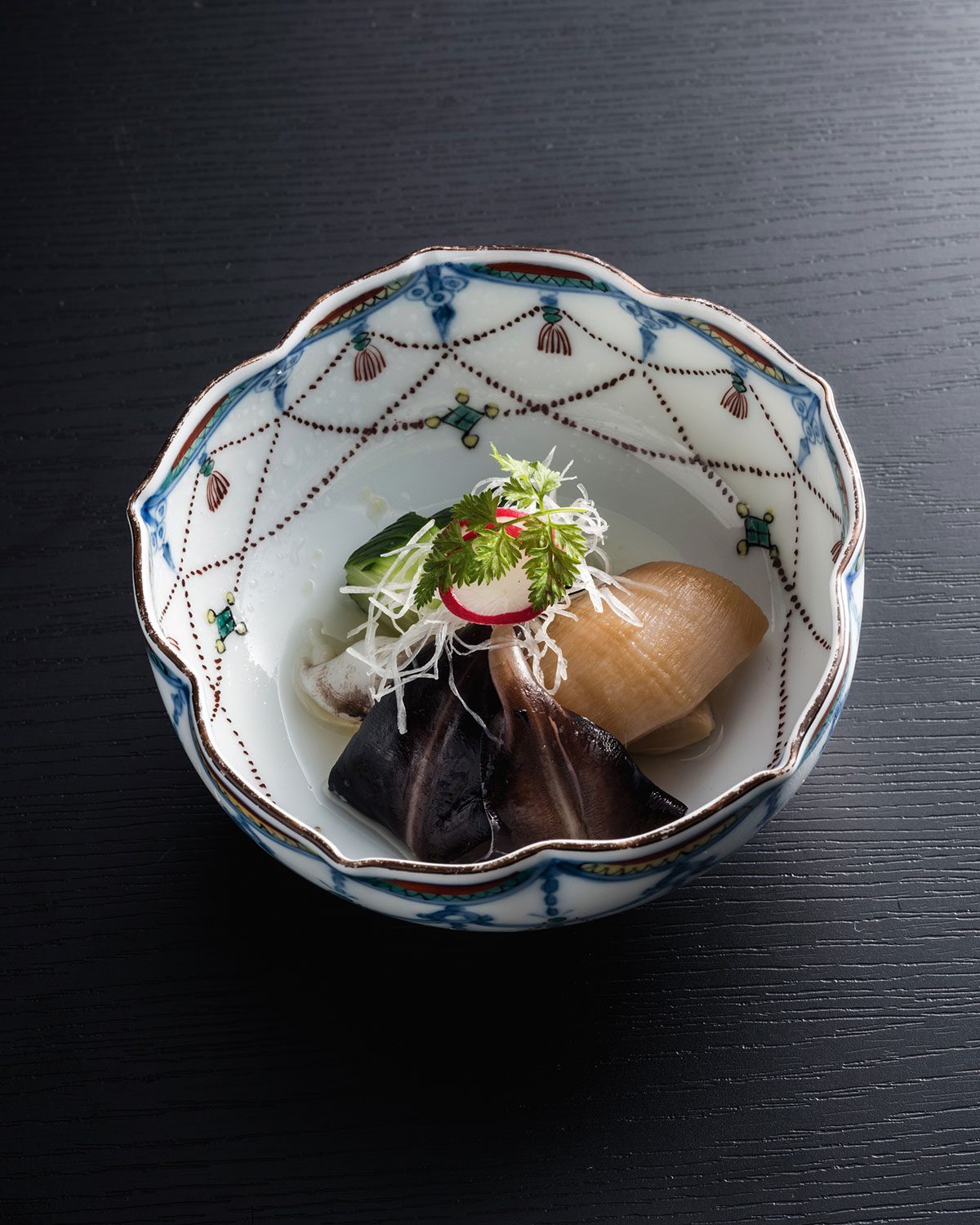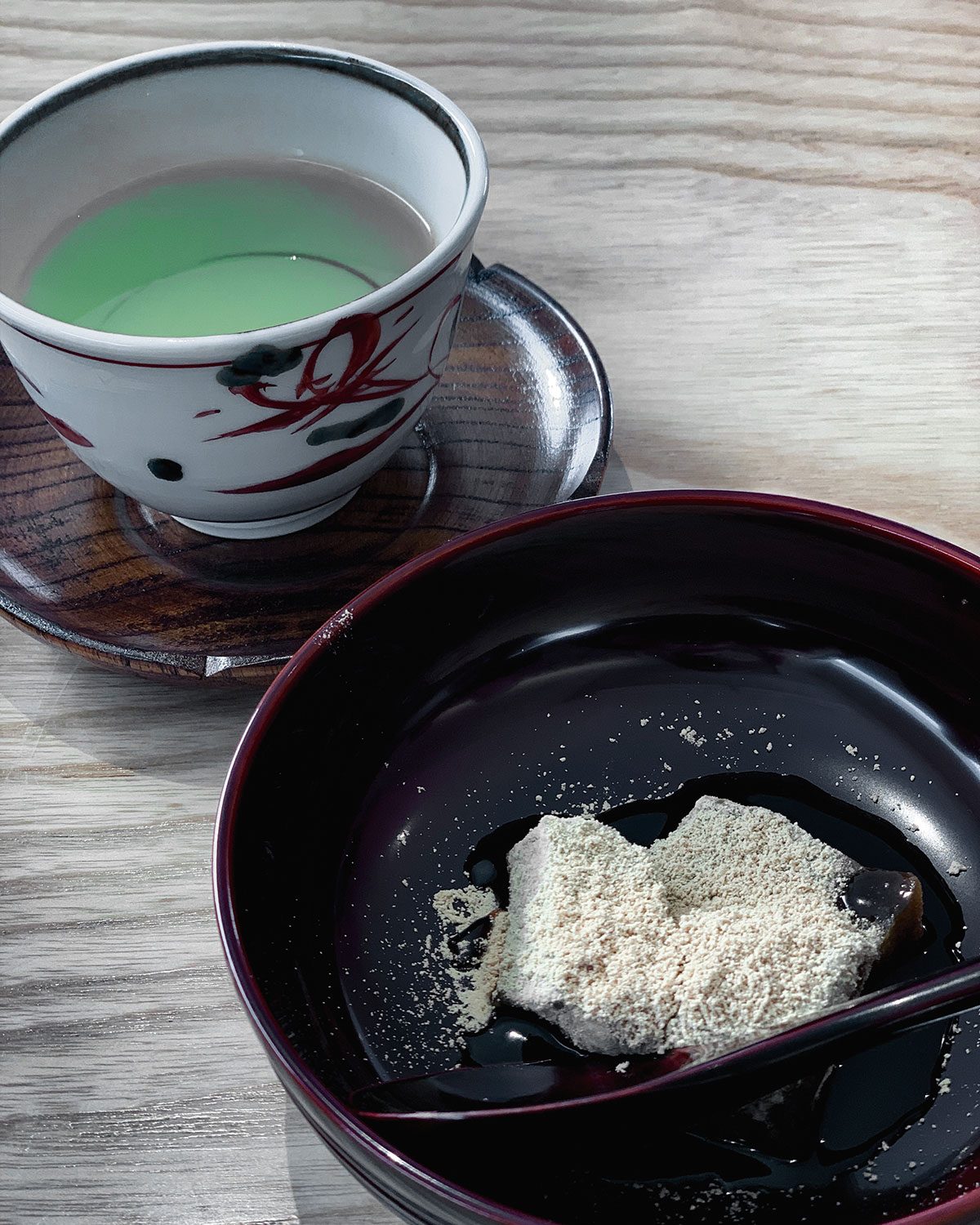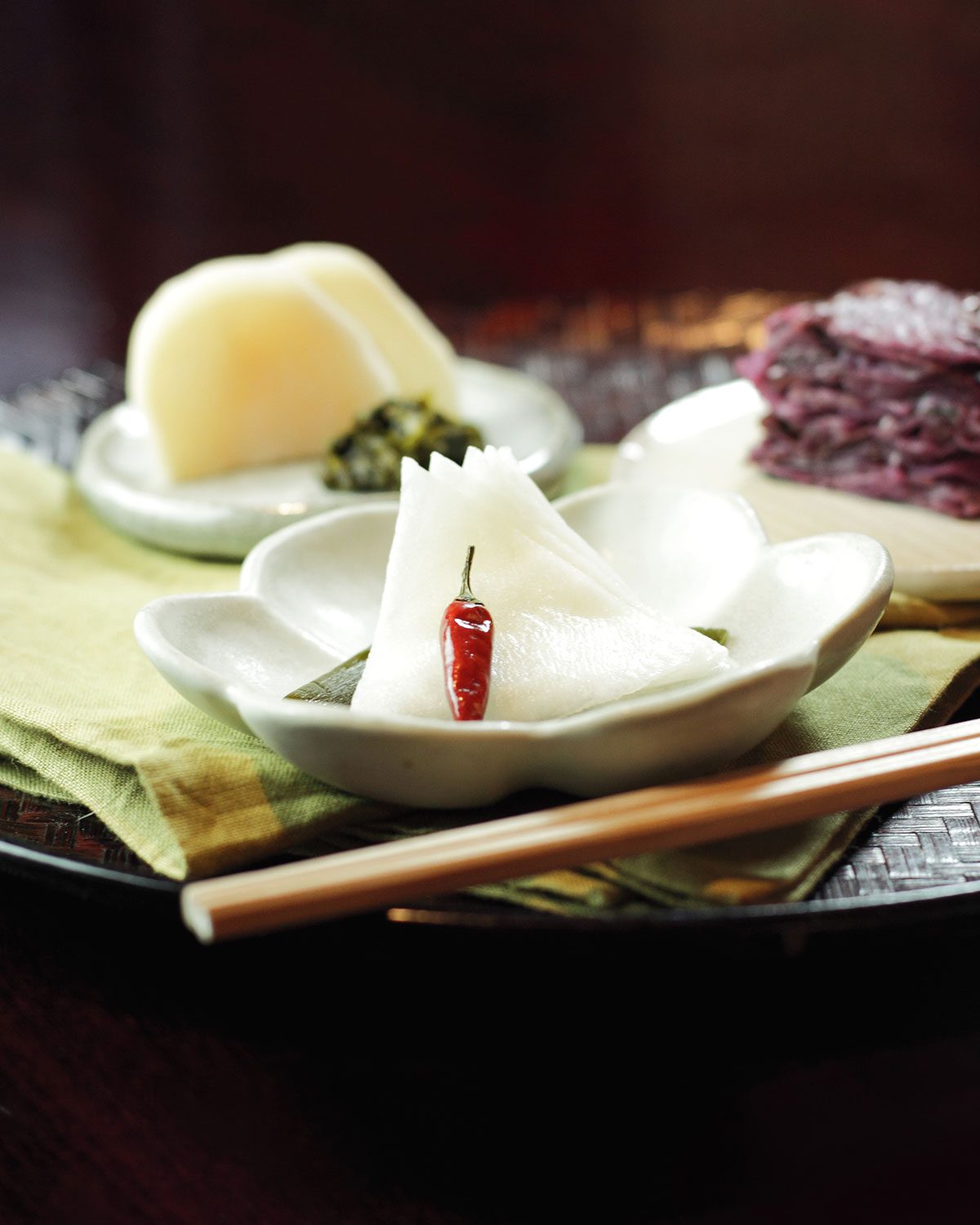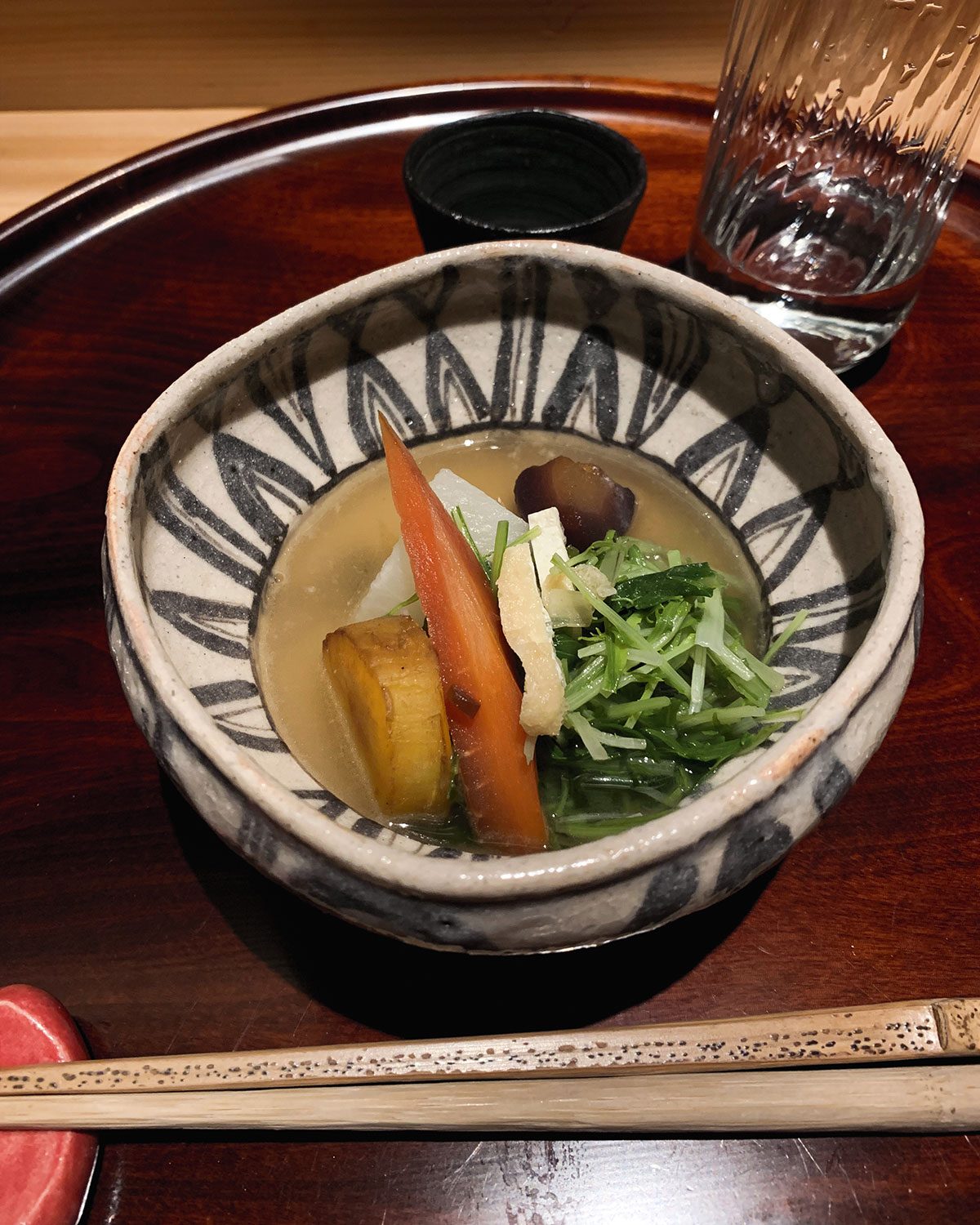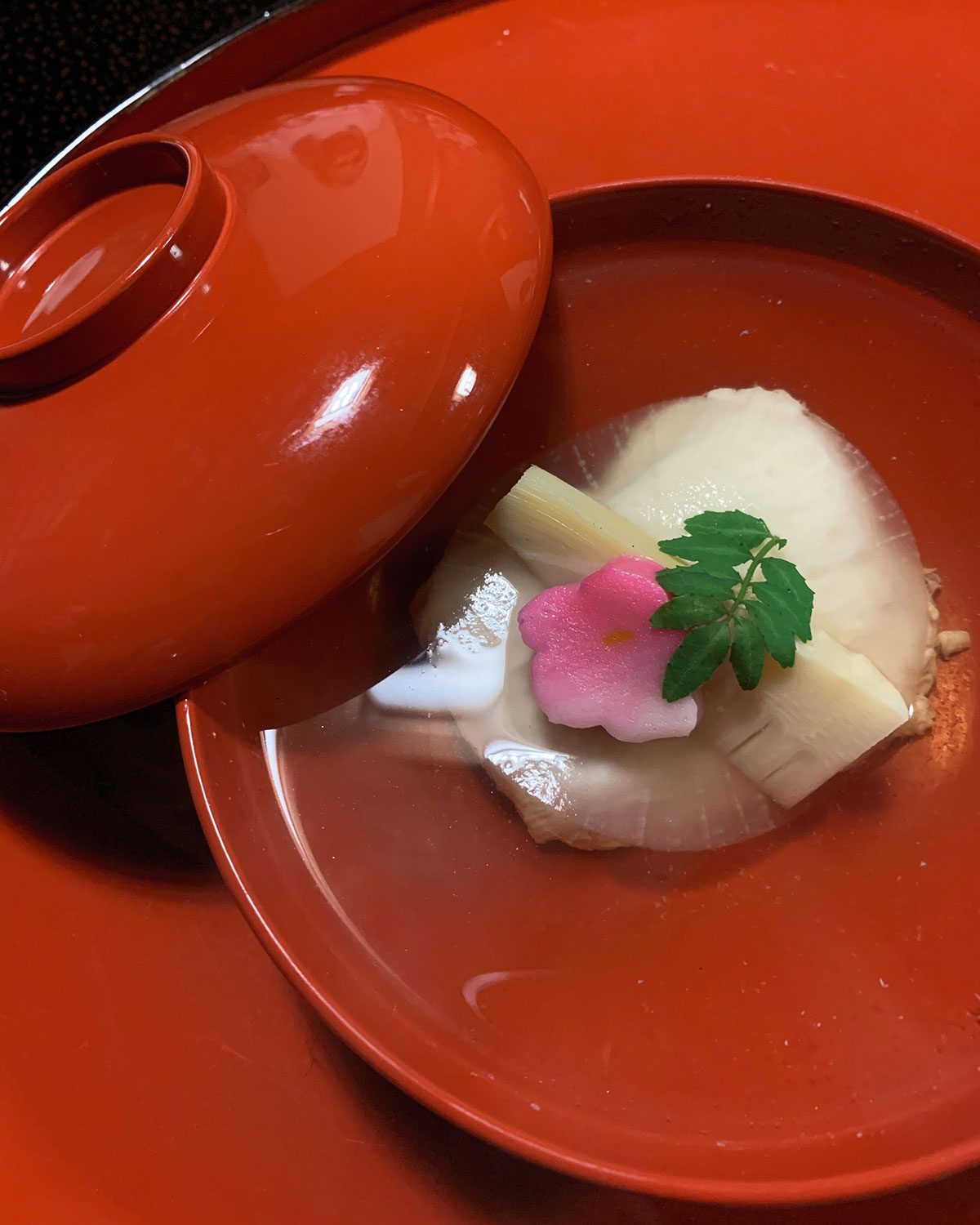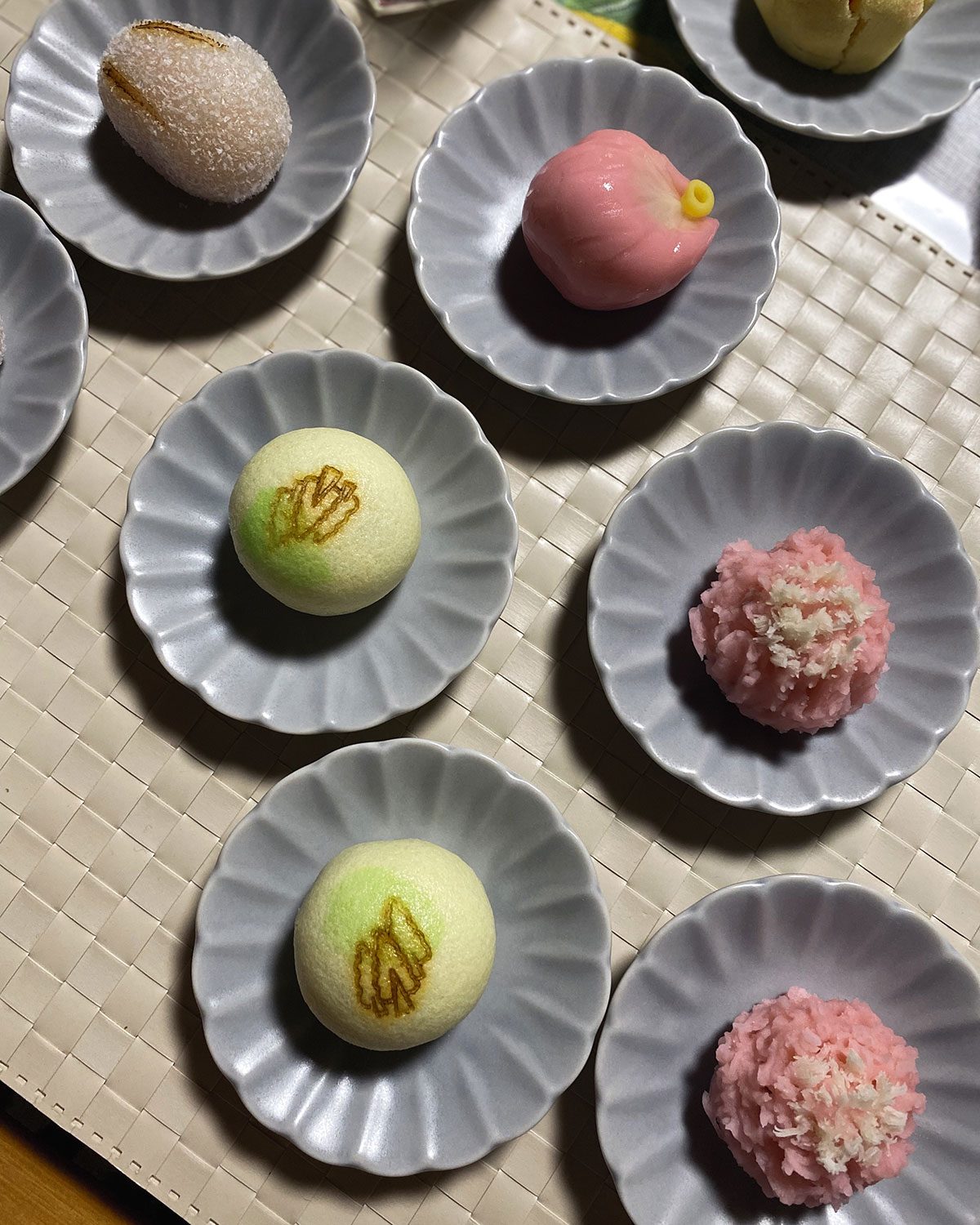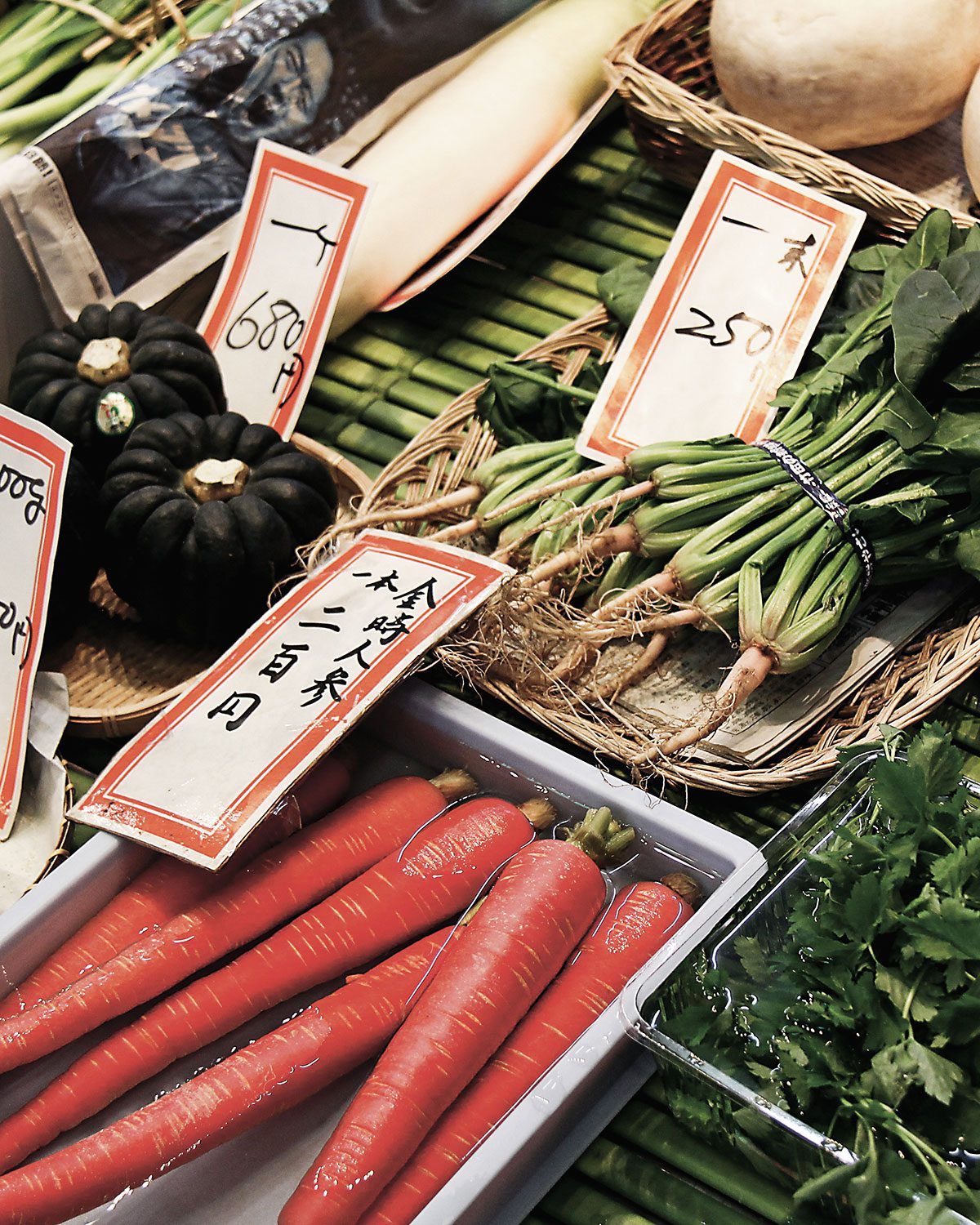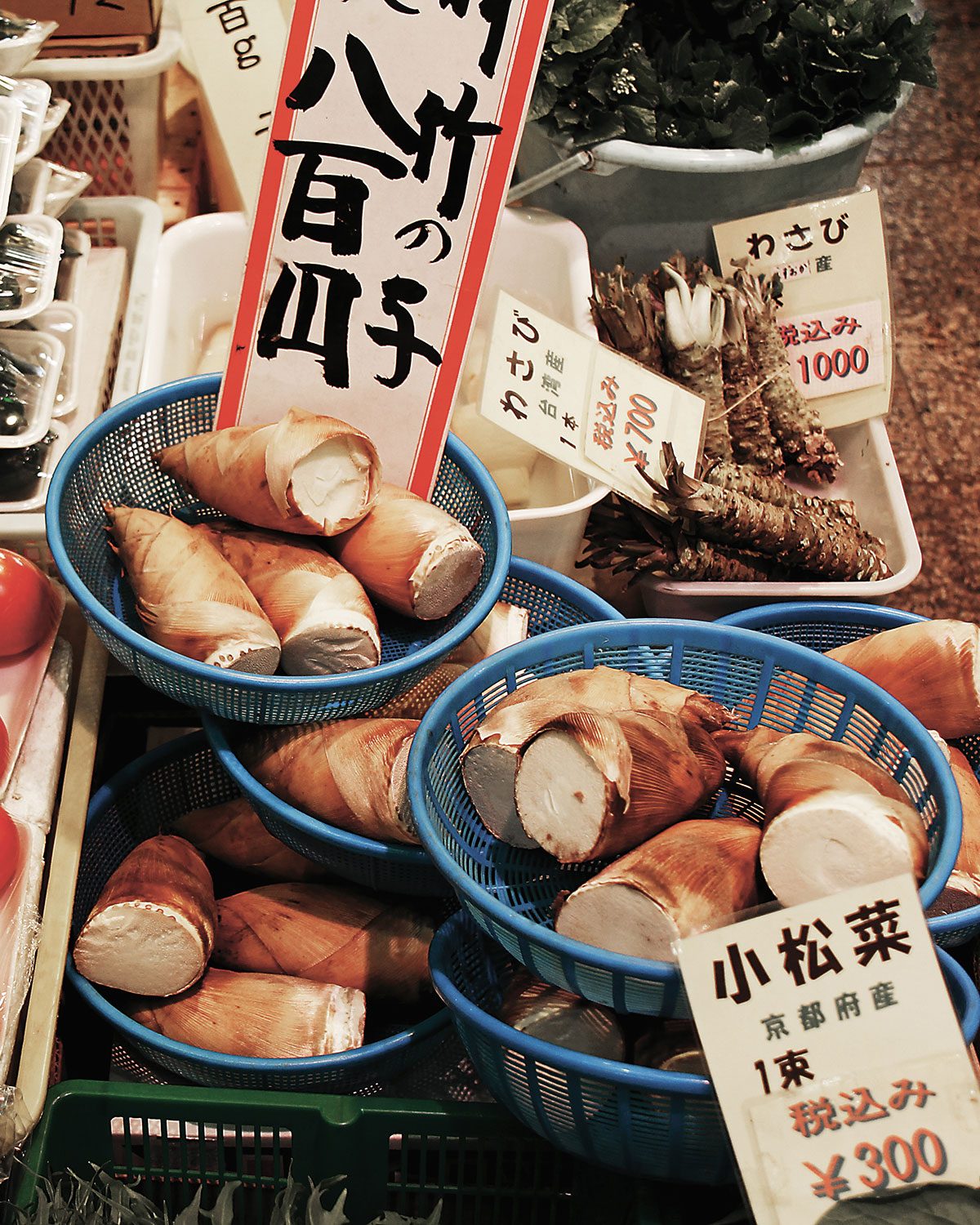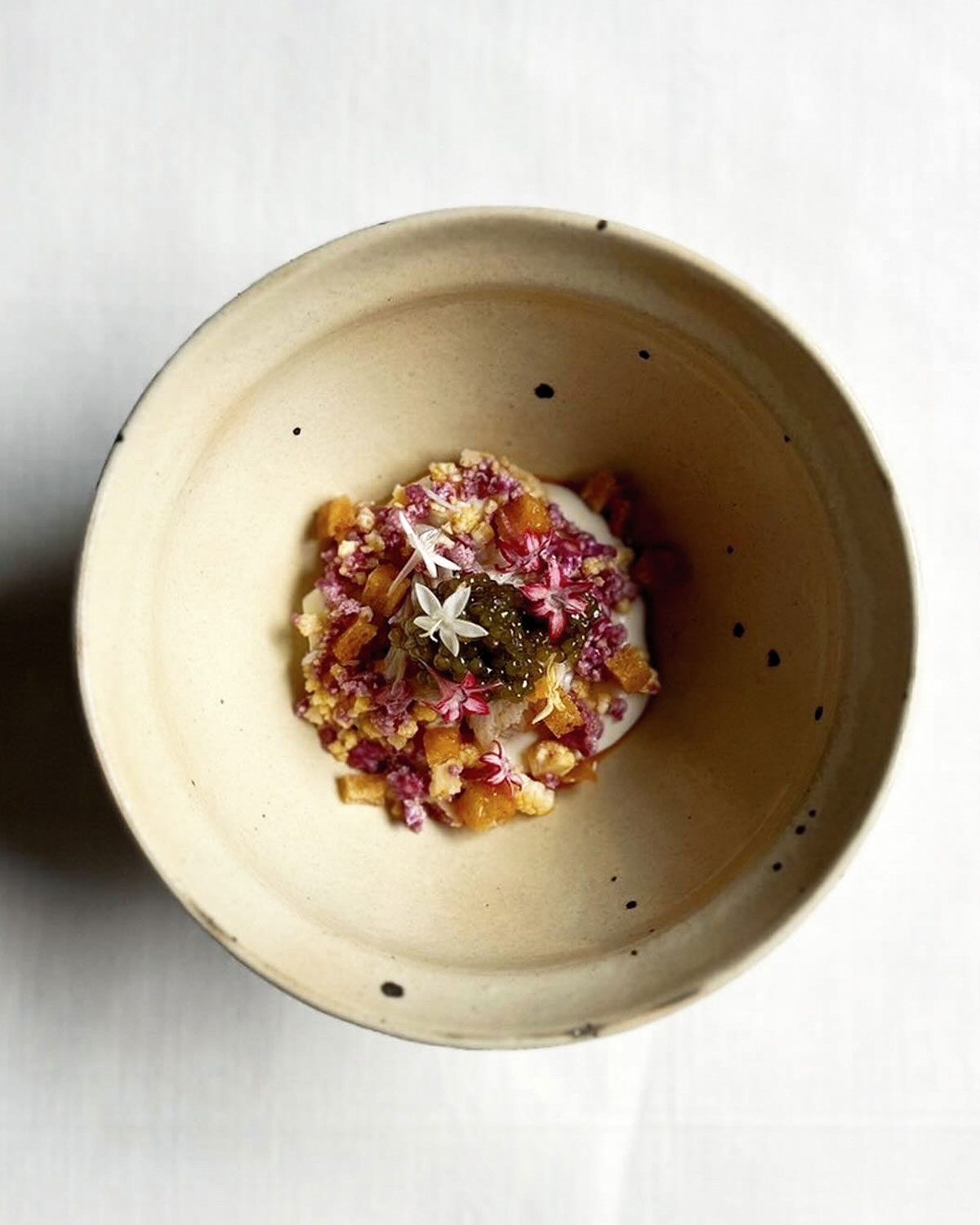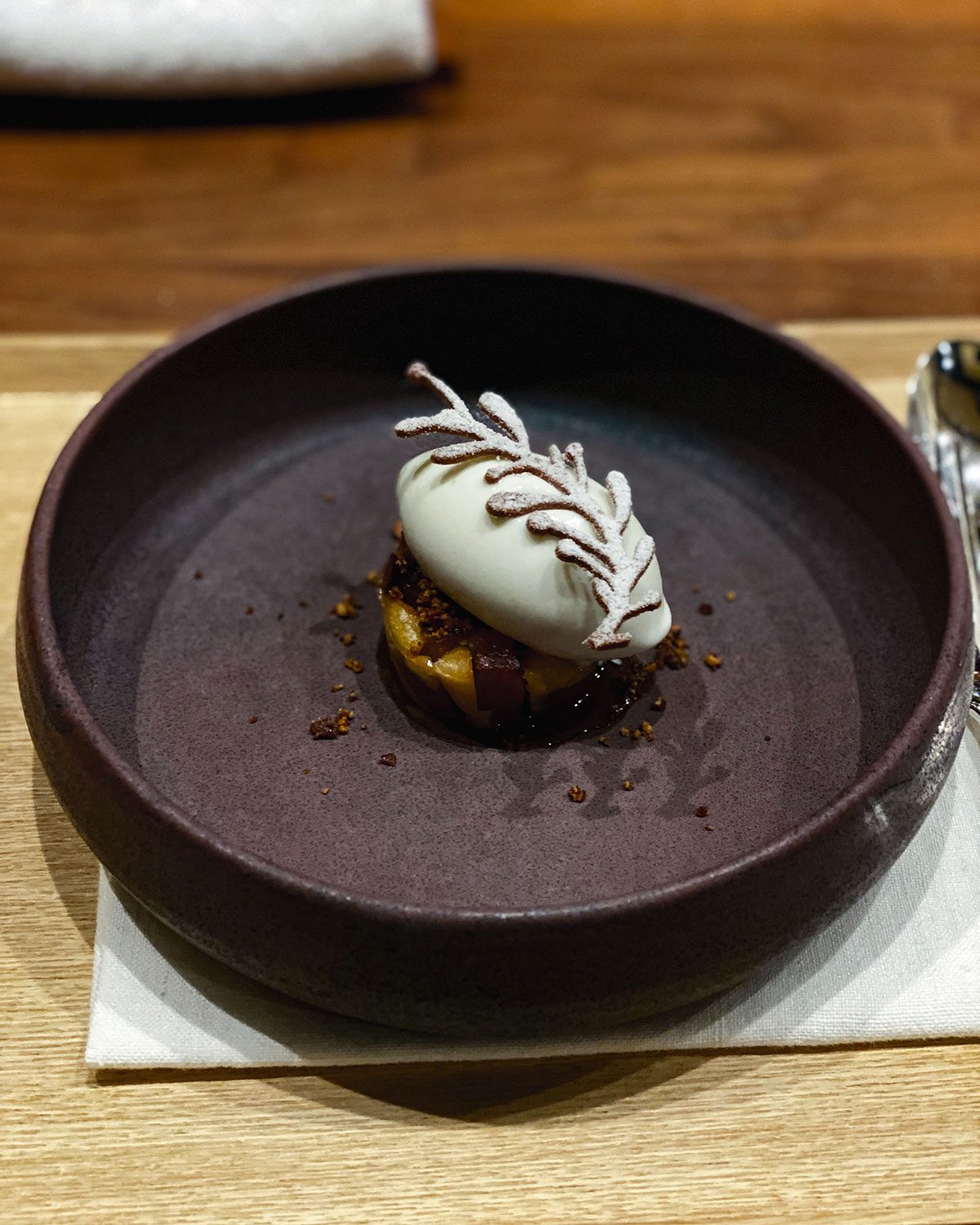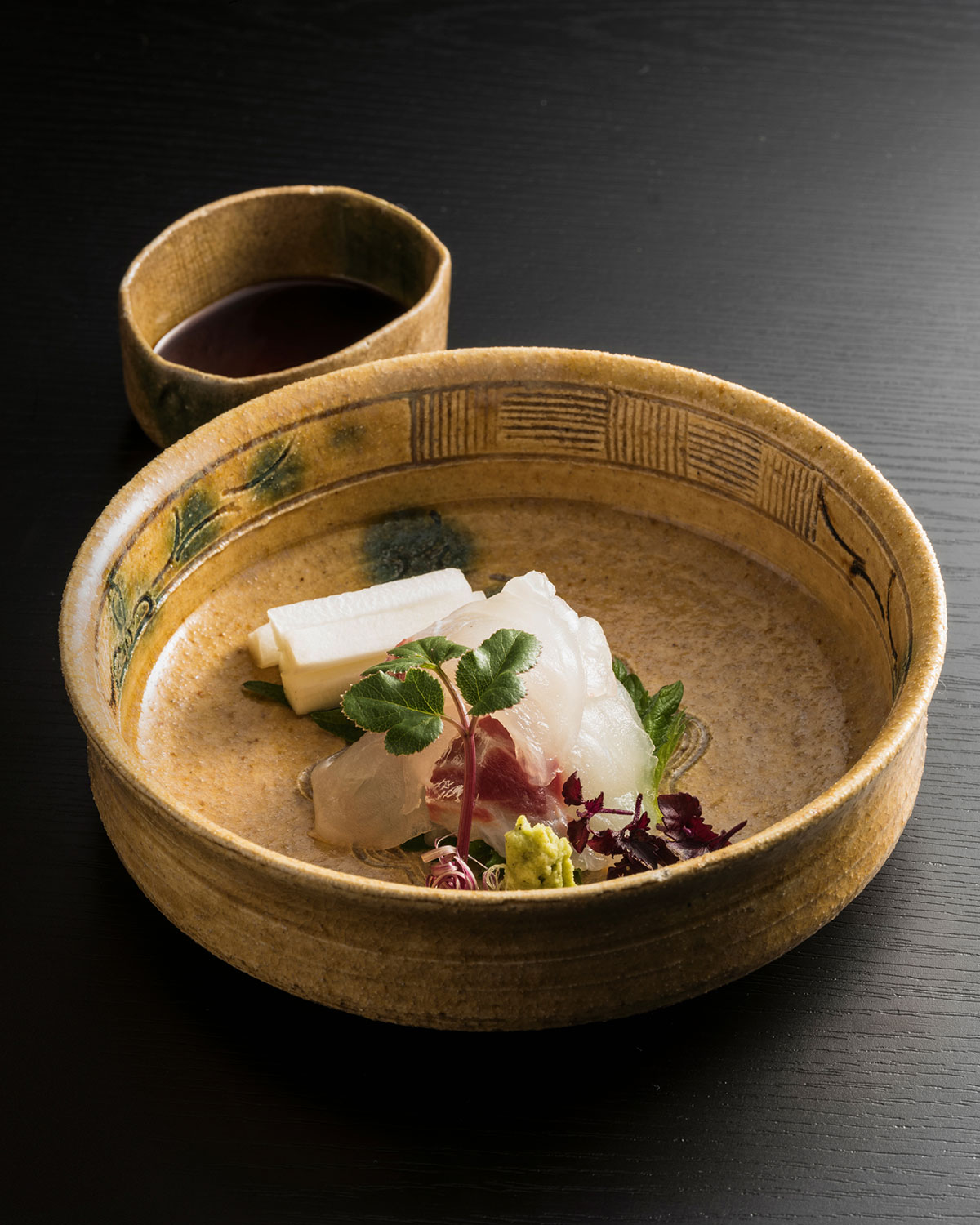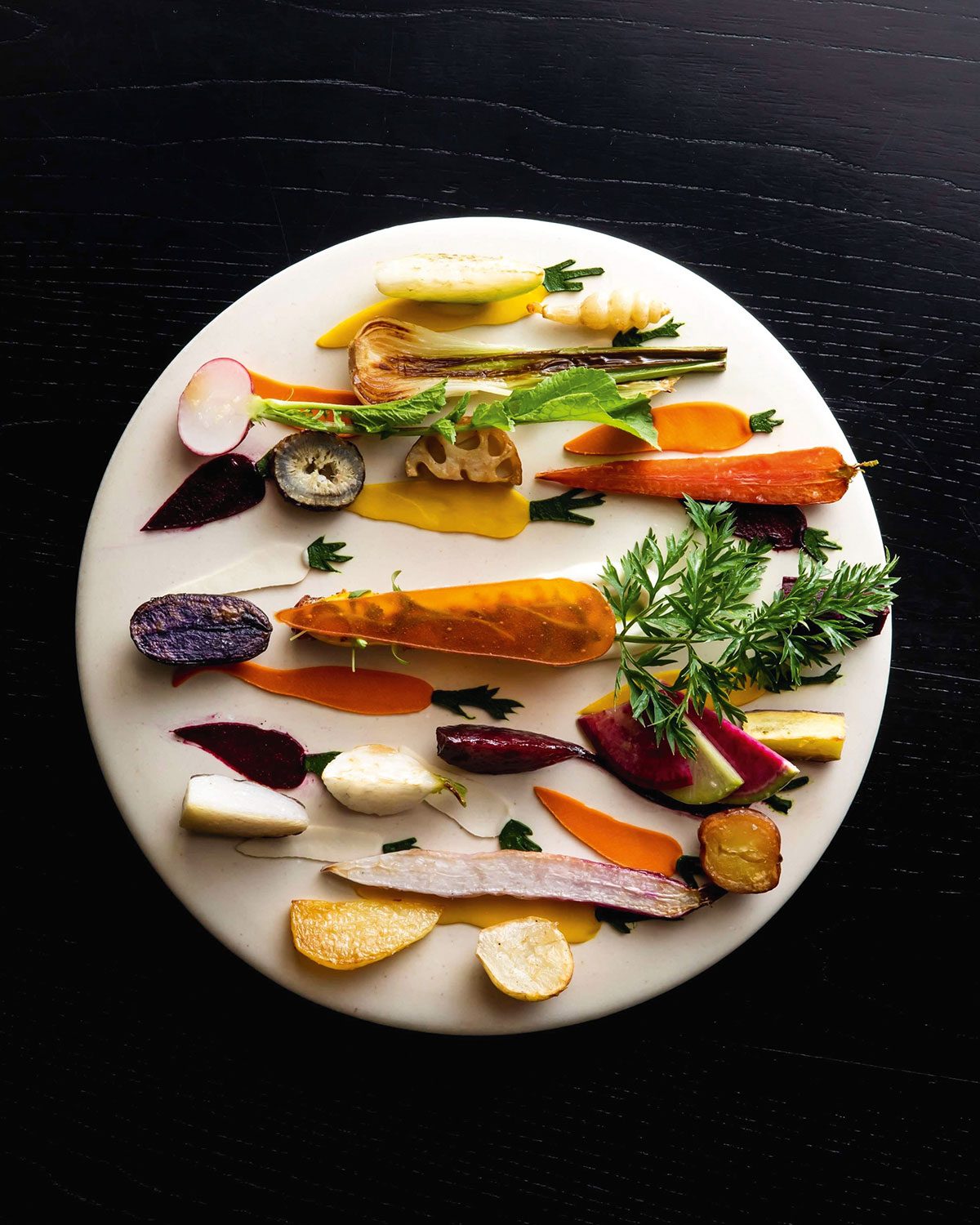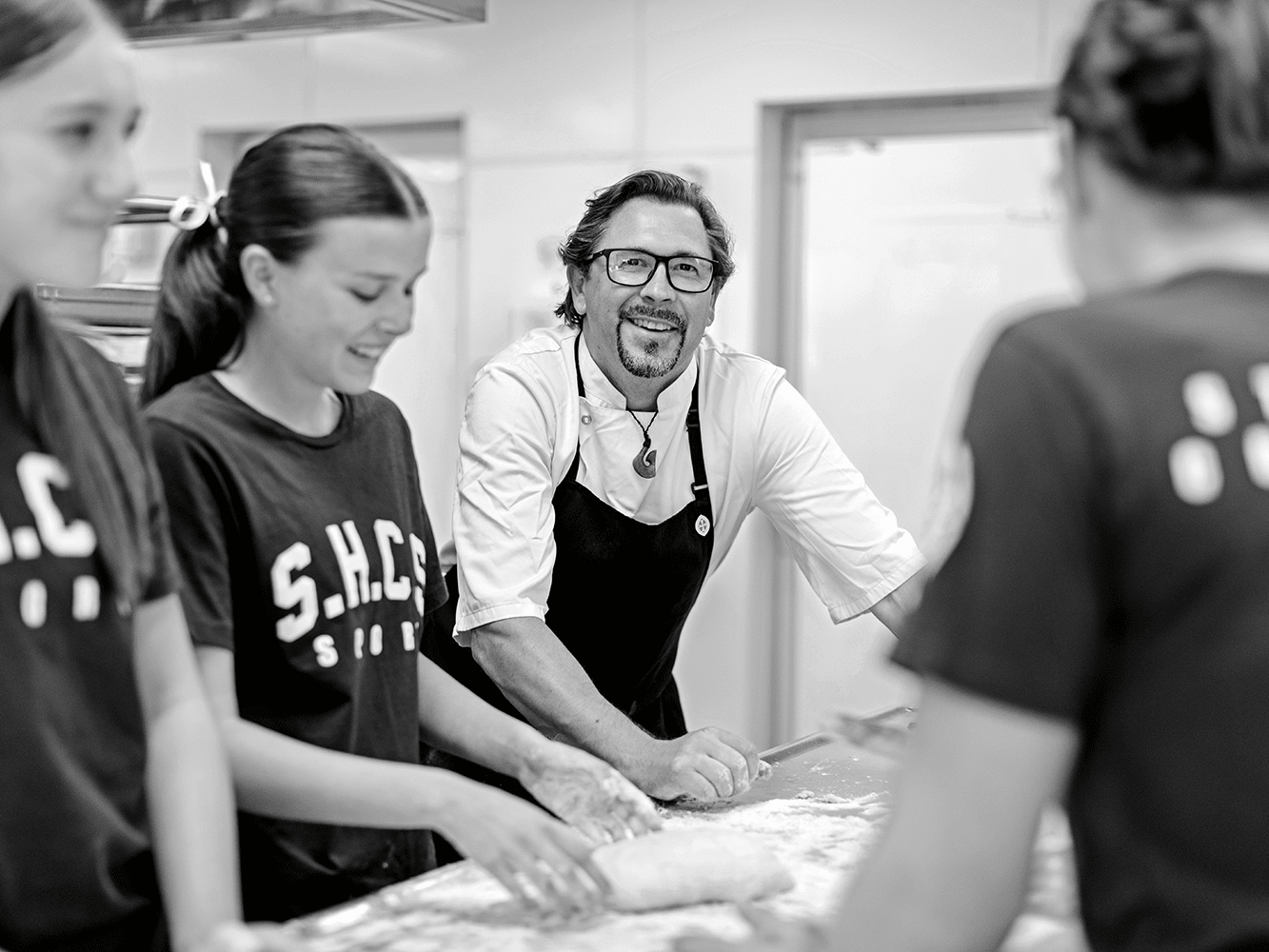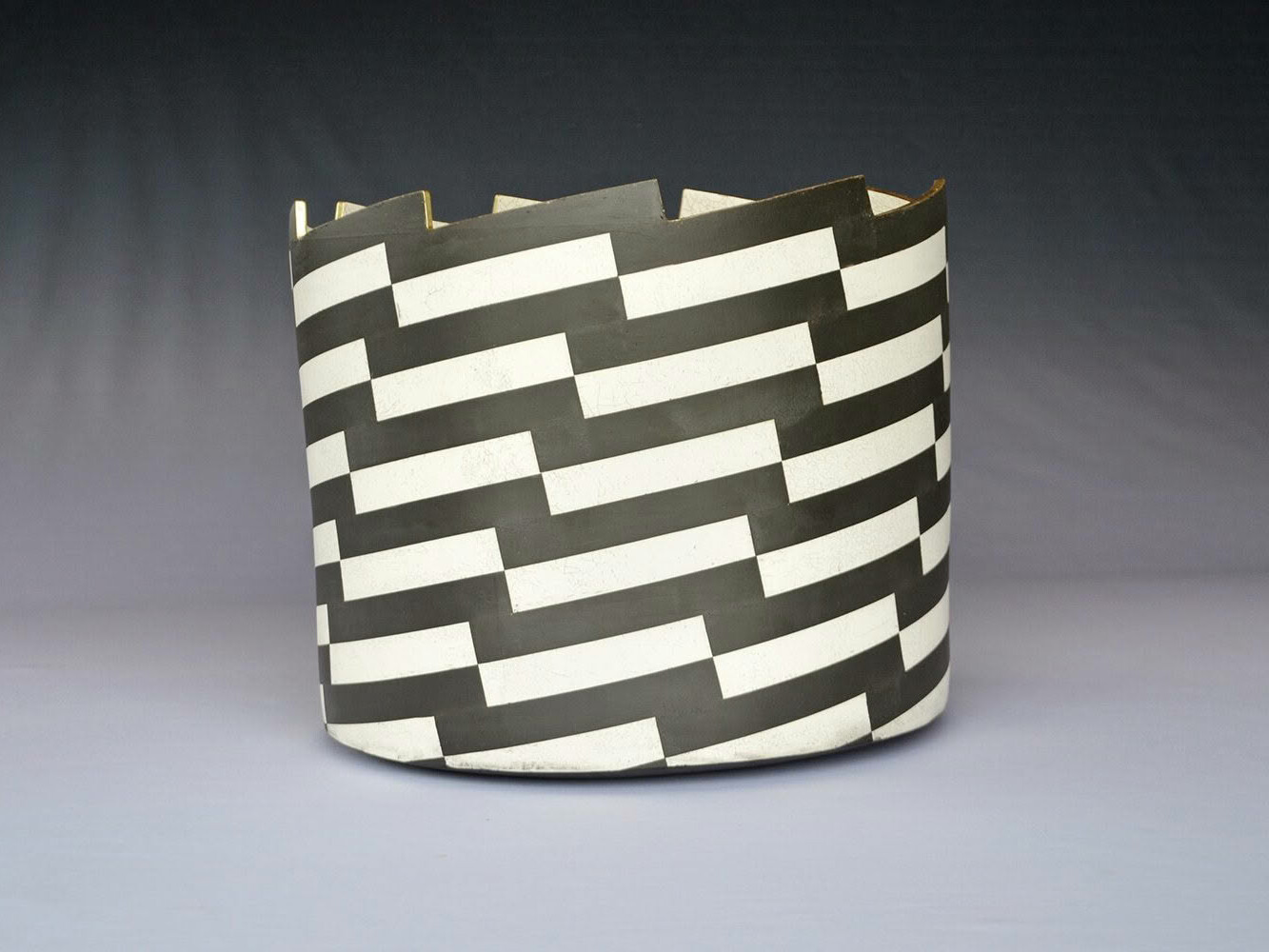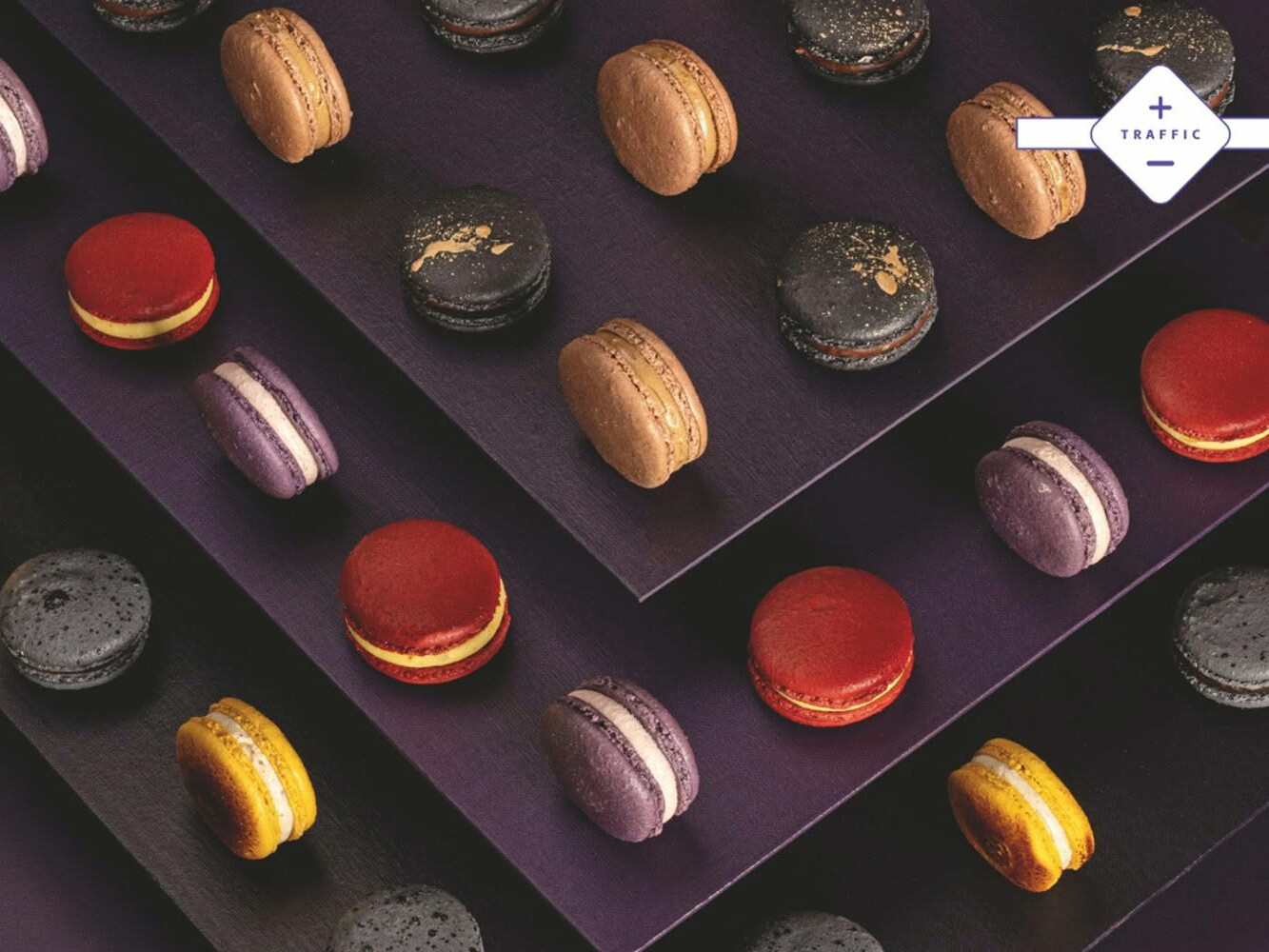Where Tokyo swaggers under the heft of its Michelin stars, Kyoto floats in a world of tea, ceremony, grace and subtlety, all the while treading water between tradition and the avant-garde.
Spared the wrath of WWII, former capital Kyoto – a low- rise city of immense historic significance – maintains a richly authentic atmosphere, intriguing and beckoning in a way that most Japanese cities cannot rival. In fact, Kyoto’s culinary scene claims one inextricable yet flexible strand of the cultural fibre that has long bound Japanese society.
Celebrating its deepest roots while simultaneously embracing ingenuity, Kyoto chefs and home cooks on any given day will obsess over heirloom vegetable species, winter’s fattiest fish phase or the precise moment a mountain vegetable buds in spring (just right for tempura) before nodding towards a highly contemporary reimagining of tea ceremony or the latest gastro-temple.
Myriad culinary experiences offer foreign visitors ample opportunity to connect with both past and new directions in Kyoto food. What is often not realised, however, is the link to the increased importance of Buddhism during Kyoto’s reign (the Heian period 794- 1185, although it was first introduced in the 500s), which dramatically impacted Japan’s culture including the arts, architecture, gardens and, of course, food. Take one enamoured Imperial family, mix enthusiastically with a loyal and willing court, then drip filter over the people.
THE WAY OF TEA
Tea ceremony is an excellent example of one activity well steeped in Zen-sect Buddhism and integral to modern lifestyles. Memory has faded the exact number I’ve attended over four decades, but I do recall each as mesmerising, grounding and insightful. Some were exceedingly formal and protracted, others abbreviated yet relaxed. Several were performed by monks, geiko or okami-san (a traditional inn’s owner/ manager), others were demonstrated by eager tea-student friends or ice-cool design types with sharp haircuts and robotic focus. However you take it, tea ceremony beautifully prepares the way for any Kyoto culinary adventure.
At Camellia Tea Ceremony (tea-kyoto.com) simple step-by-step explanations accompany proceedings. Although it’s traditional to remain silent during the ritual, this venue’s informative style gently inches open the door to the ethereal world of sado (or chado or chanoyu, depending on different schools of thought). As a first timer, you wouldn’t otherwise learn to listen for the bubbling of water or the soft whisper of the tea whisk as it rhythmically swirls through matcha. Nor might you note the server’s hypnotic hand gestures, symbolic placement of utensils and precise folding of ceremonial cloth, all conducive to the desired semi-meditative state. You could easily miss the detail in focus points such as chabana (tea-specific flower arrangements) honouring seasons passing and approaching, or the specially selected scroll hanging in the tokonoma (alcove), soothing the eyes and souls of participants. This level of detail and assumed hospitality speaks volumes about Japan’s general service manner and greater culture. You can never unsee what you witness through tea.
Once enamoured with matcha (powdered high-grade green tea) or the accompanying hand-crafted wagashi (tea sweets) in seasonal shapes and shades, shuffle over to Toraya (toraya-group.co.jp/shops/shop-55), a light-drenched modern tearoom west of the Imperial Palace. Select from the glass cabinet’s lineup of fresh sweets and sip away without interruption. Alternatively, slip past the traditional canisters at tea-shop Ippodo (ippodo-tea.co.jp) to locate a quaint backroom where the daring might sample slightly bitter koicha, a thick slick of moss-green tea, often passed around in a communal cup to commence a tea event and packed with enough caffeine to fuel a entire day’s Kyoto meandering. Gion (Kyoto’s largest geisha precinct ) boasts several shops such as Kagizen (kagizen.co.jp), serving various forms of artful confectionery, and the popular dessert kakigori (shaved ice with matcha or seasonal syrups, sometimes sweet beans, fruit or ice cream) is sheared to order at places such as Gion Niti, secluded in a tiny laneway east off Hanamikoji Street, near Gion Corner.
DIVINE DINING
Kaiseki-ryori (multi-course formal Japanese cuisine) is usually experienced at traditionally built restaurants known as ryotei, sometimes attached to ryokan (traditional inns of which Kyoto hosts the lion’s share in Japan) or elegant stand-alone kappo (counter) eateries and usually served on eye-wateringly expensive bespoke or antique pottery and lacquerware serving vessels. Regarded as the epitome of Japanese dining sophistication, kaiseki, like tea ceremony, stems from humble Buddhist roots – in fact a form of kaiseki is served at certain tea ceremonies.
In modern kaiseki, an average of twelve expressive courses are individually presented, their cookery methods and service sequence directly influenced by shojin-ryori (temple cuisine), Zen philosophy and nature. Clearly the addition of animal protein speaks of artistic licence, but one constant is the symbolic finale of rice, soup and pickles which, if you pay attention in situ, you’ll note is applied in everyday teishoku, a casual set meal for one often served on a tray and reasonably priced. Ironically, the original meaning of the word kaiseki describes a warm stone secured within a monk’s robe over his stomach, to stave off hunger.
While some kaiseki venues are exceedingly expensive and prim, Muroi (muroi.shop) in northern Kyoto city – which offers extraordinary cuisine in a superbly renovated, intimate slither of an old farm building – is comparatively affordable and relaxed, allowing chef Shigeru Muroi’s creativity to shine. His command of English further gifts travellers an understanding of provenance and inspiration.
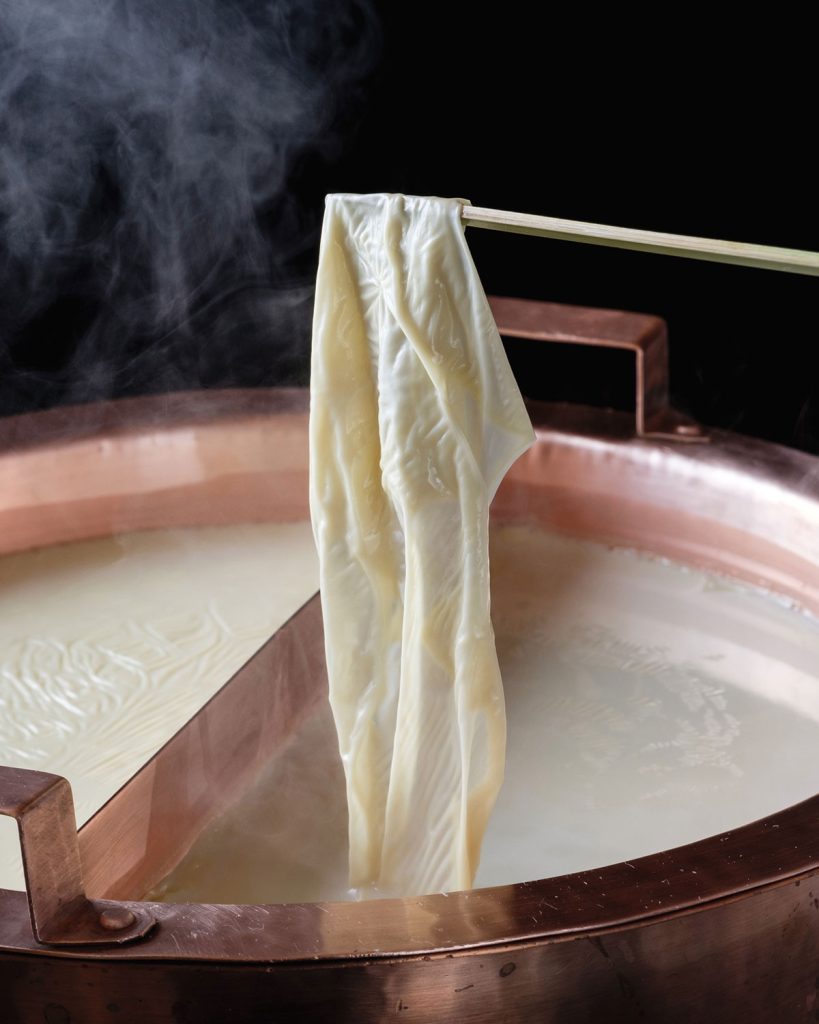
PLANT-BASED POISE
Beyond its calling, shojin ryori (Buddhist vegan cuisine) long demonstrated necessity as the mother of invention. Monks charged with cooking the monastery’s vegan diet had no choice but to embrace innovation due to limited available ingredients. You’ll know edamame as the green soybean pods people pop like peanuts, but dried soybeans (daizu) enjoy far more culinary applications in shojin cuisine. Nutty and delicious when cooked, daizu are also incredibly nutritious when fermented into miso paste or natto (although the latter condiment’s pungent aroma and viscous texture is challenging for some). Rehydrated daizu are ground to produce soy milk which is then set into tofu of various consistencies. Additional treatment, such as dehydrating (a happy accident from ancient times) or deep-frying (a game changer introduced with Buddhist teachings from China), further enhanced the flavour of tofu and its textural range which, if you squint your palate, are vaguely reminiscent of animal proteins such as meat or cheese. Creamy yuba (tofu skin, akin to that which forms when dairy milk boils) is the perfect vessel for wrapping foods. Okara (soy milk lees), with its grainy couscous-like consistency, forms the base of countless side dishes and fillings. Eventually capturing the attention of the aristocracy, the cuisine became more accessible and popular.
Most shojin-cuisine establishments remain situated within temple precincts, perfect for post-lunch ambling of the grounds and gardens. While I find less dedicated operations underwhelming, exceptional examples do exist, including Ajiro (ajiro-s.co.jp) opposite Myoshinji temple complex’s south gate and Izusen (kyoto-izusen.com) at Daitoku-ji in the city’s north. At Gion Okuoka (okuoka.com), a Kyoto food specialist south of Yasaka shrine, small nabe (pots) of soy milk are set over tabletop burners for DIY yuba; heavenly drizzled with locally brewed shoyu (soy sauce) and a nub of fresh grated wasabi or ginger.
LANDLOCKED BOUNTY
Distanced from the coastline, Kyoto’s cuisine has historically relied less on seafood and more on kyo-yasai (quality local vegetables, fresh or preserved ) and food sourced from the mountains which encircle the city. Recently I met with a farmer and ex-monk, the proprietor of Ohara Farmy (farmyproject.com) – a brilliant initiative in the Kyoto countryside for gardenless city folk to grow vegetables for personal consumption under professional instruction. It also hosts inspiring regular tours and events. His knowledge of Buddhism and Kyoto’s cultural history taught me that varieties of vegetable seeds were introduced directly to Kyoto from China through Buddhism and stored and allocated by temples. This certainly helps to explain Japan’s deep reverence for kyo-yasai, though not to take away from the clever farming practices, climate, pure water and fertile soil that assures their quality.
You’ll savour kyo-yasai at their seasonal, delicious best in Kyoto restaurants including Monk (restaurant- monk.com), a modern eatery on the Philosopher’s Path where chef Imai’s simple, rustic menu pays homage to the natural sweetness and flavour of locally grown vegetables. Perhaps the most fun way to learn about kyo-yasai is visiting Nishiki Market (kyoto-nishiki.or.jp), a covered strip of food and kitchenware stores running west off Teramachi dori (literally ‘temple-town street’, a shopping arcade built around pre-existing temples). Go early, avoiding inevitable crowds, for close-ups on vegetable stands where in season you’ll find fresh bamboo shoots, lotus, burdock root, soccer-ball-shaped daikons, red carrots, ebi-imo (buttery taro named for its curved, striped ‘prawn-like’ appearance) and a fascinating array of sansai (mountain vegetables) including edible ferns and bracken. Just as enticing are the many pickle stores. Exiting the western mouth of the market you’ll locate Daimaru department store’s depachika (underground food hall) a few metres south, brimming with stupendously fresh produce and pre-prepared wares. If you’re staying somewhere kitted out with a kitchen – an apartment rental such as Mimaru (mimaruhotels.com) or a restored traditional merchant house or shop-house known as a machiya (try Machiya Residence Inn, kyoto-machiya-inn.com) – you’ll be giddy with delight.
MASTERED ARTS
If you are kitchenless, you may be denied the joy of cooking local delicacies, but what better excuse to leave it to the professionals. Think fragile tempura, slightly chewy hand-cut noodles or pour-over coffee in the cosiest café. It’s well-documented that Japanese chefs commonly focus on honing their expression of a single food type – for example, at a top-notch yakitori-ya (grilled chicken joint) you’ll find every part of the chicken lovingly tended over charcoal, until irresistibly delectable. Occasionally karaage (marinated fried chicken), chicken broth or an egg might get a look in and tsukune (a flavoursome chicken meatball) dipped into a freshly laid yolk is a guilty pleasure). If you’re super lucky, a few token vegetables or salad may appear. But that’s it. Additionally, you should know to order a maximum of three plates at one time to allow the chef to feed several customers at once and, although you likely won’t be directly pressured, don’t linger after eating if there’s a waiting queue. If that sounds too daunting, book an omakase (chef’s choice course) where available. Upmarket Wabiya (wabiya.com) and its sibling eateries may be more expensive but a sumptuous selection and relaxed comfort is promised. For broader choice, izakaya (literally sake shops but selling both food and booze) serve a range of small share plates and drinks including beer and chu-hai (shochu-based cocktails). Keep an eye out for rustic mom-and-pop establishments or more contemporary, hipster-chef run venues. Any izakaya operated under the Isoya group umbrella (such as Isozumi or Onikai, isozumi.jp) are guaranteed (small) crowd-pleasers with their farm-to-table approach.
Japan is awash with Francophiles and Kyoto, sister city to Paris, houses a swathe of very fine Japanese-French dining options. Motoi (kyoto-motoi.com) and recently opened Restaurant Moko (@restaurant_moko_kyoto), both located in gorgeous settings, will take your breath away with their stunning approach. In the same vein, Japanese- Italian might sound like an unusual marriage but this umami-driven culinary twinset is a sound match – check out Bini (restaurant-bini.com) but with just two tables, you’ll need to book ahead. Then there’s exciting Lurra (lurrakyoto.com) run by a handful of young Kyoto creatives anchored with talent and impressive CVs, offering a wondrous peek into Kyoto’s eternally evolving culinary journey and the part it plays on the world’s table…. and that’s all you need to know. ■
SEE MORE FROM CUISINE
Inspirational Women in Food & Drink
New Zealand’s food-and-drink industry is filled with hardworking and…
We’ve Noticed…. Marcus Verberne
Cooking skills open up a world of different opportunities. From fine…
Design File / Mark Mitchell / Ceramic artist / Northland
In his Northland studio, Mark Mitchell crafts ceramic pieces that use…

